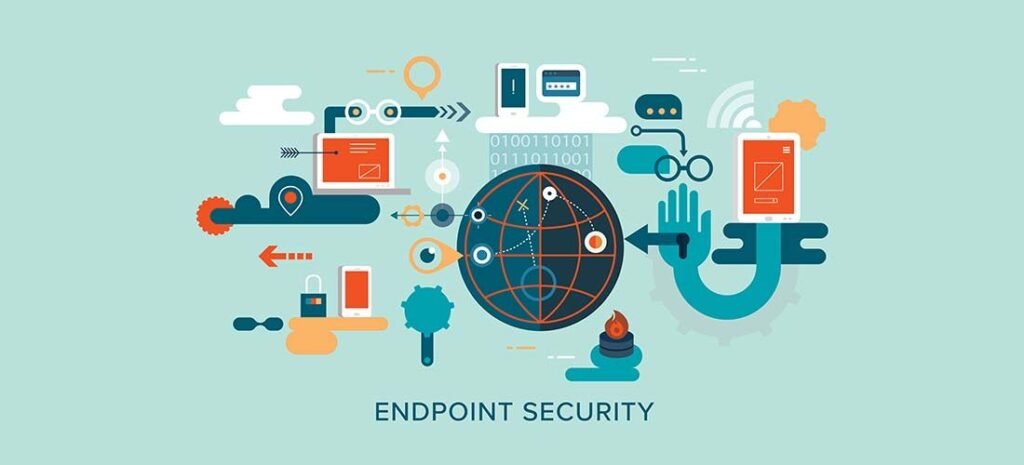In today’s hyper-connected digital landscape, securing endpoint devices—ranging from desktops and laptops to smartphones and tablets—has become a business-critical imperative. As organizations increasingly rely on remote work, cloud services, and bring-your-own-device (BYOD) policies, the endpoint has emerged as a prime target for cyber adversaries. Endpoint protection, therefore, is no longer optional; it is foundational to enterprise-wide cybersecurity.
This guide explores the strategic importance of endpoint protection, identifies core functional components of modern solutions, and evaluates top-performing software platforms to enable informed, effective decision-making.
Understanding Endpoint Protection
Endpoint protection refers to the centralized framework for securing devices that connect to an organization’s network. These devices serve as digital gateways into enterprise environments and, if inadequately protected, can serve as launchpads for ransomware, data theft, and espionage. The primary objective of endpoint protection is to preempt, detect, and neutralize threats before they infiltrate or escalate within the network.
Unlike traditional antivirus tools, endpoint protection platforms (EPPs) are multi-layered and adaptive. They incorporate threat intelligence, machine learning, behavioral analytics, and real-time response mechanisms to safeguard dynamic, decentralized IT ecosystems.
Strategic Importance of Endpoint Protection
1. Mitigation of Data Breaches
Endpoints often contain or access sensitive customer, financial, and operational data. Endpoint protection helps prevent unauthorized access, reducing the risk of breaches that could have severe financial and reputational consequences.
2. Regulatory Compliance
Frameworks such as GDPR, HIPAA, and ISO/IEC 27001 demand robust data protection controls. EPPs assist organizations in fulfilling these regulatory obligations by offering encryption, auditing, and policy enforcement capabilities.
3. Operational Continuity
Cyberattacks can result in business disruptions, especially if critical systems are affected. Effective endpoint security reduces downtime and enhances the organization’s ability to respond swiftly to incidents.
4. Reputation and Stakeholder Trust
High-profile breaches erode customer confidence and investor trust. By demonstrating a commitment to cybersecurity, organizations can enhance their brand equity and credibility in the marketplace.
Key Capabilities of Endpoint Protection Solutions
When evaluating endpoint protection tools, organizations should prioritize platforms that offer the following capabilities:
- Antivirus & Anti-Malware: Core protection against known threats using signature-based and heuristic analysis.
- Firewall Management: Controls network traffic to prevent unauthorized access and lateral movement across systems.
- Intrusion Detection and Prevention Systems (IDPS): Real-time detection and mitigation of suspicious behavior and exploitation attempts.
- Data Encryption: Secures data at rest and in transit, mitigating risks in case of device loss or theft.
- Application Control: Blocks the execution of unauthorized or potentially harmful software.
- Endpoint Detection and Response (EDR): Provides continuous monitoring, threat hunting, and incident response capabilities.
- Patch and Vulnerability Management: Automatically updates software to close known security gaps.
These integrated features collectively enhance an organization’s cyber resilience, ensuring a proactive rather than reactive security posture.
Leading Endpoint Protection Platforms
Based on independent analyst reviews and user feedback, the following software solutions stand out for their comprehensive protection, usability, and innovation:
1. Bitdefender GravityZone Business Security Enterprise
Combines machine learning, behavioral analytics, and advanced threat intelligence. Ideal for enterprises needing scalable and automated protection.
2. F-Secure Elements
Excels in device visibility, remote management, and policy enforcement. Especially suitable for organizations managing distributed or hybrid workforces.
3. Sophos Intercept X Endpoint
Employs deep learning and anti-exploit technology to detect zero-day attacks. Its intuitive dashboard enhances operational efficiency.
4. WatchGuard Panda Adaptive Defense 360
Integrates antivirus and EDR, providing continuous classification of applications and advanced forensic capabilities.
5. Kaspersky Endpoint Security Cloud Plus
Delivers cloud-native protection with strong encryption, app control, and simplified management—ideal for mid-sized businesses.
6. Acronis Cyber Protect Cloud
Unique in combining backup, disaster recovery, and anti-malware within a single platform. Supports robust data resilience strategies.
7. Symantec Endpoint Security
Offers multi-layered protection, including intrusion prevention, firewall, and cloud-delivered analytics. Strong enterprise-grade features.
Best Practices for Implementing Endpoint Security
Deploying a leading tool is only part of the solution. A comprehensive endpoint protection strategy must also incorporate the following best practices:
- Conduct Regular Risk Assessments: Evaluate existing security gaps and prioritize remediation based on threat exposure and business impact.
- Establish and Enforce Policies: Define acceptable use, access controls, and device compliance requirements across the organization.
- Invest in Security Awareness Training: Equip employees to recognize phishing, social engineering, and risky digital behaviors.
- Adopt Least Privilege Access Models: Grant users only the permissions necessary to perform their roles, reducing exposure to internal threats.
- Patch Early and Often: Automate software updates and patching schedules to stay ahead of exploit kits targeting known vulnerabilities.
- Deploy Centralized Monitoring: Use EDR and SIEM (Security Information and Event Management) tools for continuous monitoring and rapid incident response.
Conclusion: A Strategic Imperative
As cyber threats become more sophisticated, endpoint protection must evolve from a reactive safeguard to a strategic cornerstone of cybersecurity architecture. By investing in comprehensive endpoint protection platforms and aligning implementation with best practices, organizations can protect critical assets, support digital transformation initiatives, and build lasting resilience in a volatile threat landscape.
Securing the endpoint is not merely an IT function—it is a strategic necessity that enables secure growth, innovation, and stakeholder confidence. Proactive organizations will not only prevent breaches but also gain a competitive edge through enhanced security maturity.



